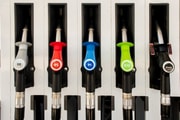This woman's one text mistake cost her $40,000 in minutes
By
- Replies 22
In the digital age, something as simple as a text message can have devastating consequences.
Harmony Antoinette, a Melbourne resident, learned this the hard way when she lost $40,000 from her bank account in less than an hour.
Her story serves as a stark reminder of the importance of cybersecurity and the need for constant vigilance in protecting our personal information.
Harmony was relaxing at home when she received a suspicious text message asking for a code. With 14 years of experience in financial services, she was well aware of the potential for scams and decided to contact her bank, Commonwealth Bank of Australia (CBA), directly.
Despite her quick action, it was too late. By the time she got through to the bank, $40,000 had already been withdrawn from her account.
'I called CommBank straight away, and within five minutes after getting those notifications my account was supposed to be blocked,' she told a news source.
'The lady I spoke to was lovely and reassuring and told me I had called in time and that the transactions could be reversed because I’d called so quickly, and she was very apologetic.'
‘The notification gave me a prompt to enter a code, but instead of doing that, I just called my bank.’
‘But there were no calls beforehand and no phishing links or cryptocurrency that looked dodgy.’
Harmony was left in shock, with no clear understanding of how this could have happened. She had not clicked on any phishing links or engaged in any suspicious online activities.
The only possible explanation she could think of was that she had recently donated her old phone to an e-waste program in Melbourne.
‘I got another notification that a transaction had been initiated by my wallet ID,’ she said.
‘One was from Catch about a purchase of over $2000 and the other one was from JB Hi-Fi about an attempted purchase they had rejected due to suspected fraud.’
It's believed that a third party was able to access Harmony’s old device and the passcodes registered to her CommBank Tap & Pay, stealing about $40,000 from her account.
Because the transactions were linked to a device associated with her banking profile for three years, they were not flagged as suspicious.
She reported it to the CBA fraud department and she was told that it looked like she had made the purchases.
‘I explained this was not the case,’ she expressed.
‘What motive would I have to make purchases and then state I didn’t?’
Following the incident, Commbank retrieved half of the stolen amount back into her account, but the remaining $20,000, made up of merchant deductions, is still missing.
She has since changed all her personal details online and lodged a complaint with the Australian Cyber Security Centre.
In response to Harmony's case, a CBA spokesperson stated, 'We encourage customers to be vigilant and protect their personal information. Customers should remove the CommBank app and restore a device to its factory settings to erase all your personal data, including any passcodes before disposing of, giving away or selling a device.'
This unfortunate incident serves as a stark reminder of the importance of cybersecurity.
Here are some steps you can take to protect yourself from online fraud:
1. Be wary of suspicious text messages or emails: If you receive a message asking for personal information or a code, do not respond. Instead, contact your bank or service provider directly.
2. Secure your devices: Use strong, unique passwords for all your devices and accounts. Enable two-factor authentication where possible.
3. Dispose of old devices safely: Before donating or recycling an old device, make sure to delete all personal data and restore the device to its factory settings. Remove any banking apps and deregister the device from any services.
4. Monitor your accounts: Regularly check your bank and credit card statements for any suspicious activity. If you notice anything unusual, contact your bank immediately.
5. Educate yourself: Stay informed about the latest scams and cybersecurity threats. The more you know, the better you can protect yourself.
By staying vigilant and taking proactive steps to protect personal information, people can help prevent such incidents from happening. If you suspect any scam or fraudulent activities, you can report here.
To know more about scam and online fraudulent activities and incidents, you might also want to consider visiting our Scam Watch forum here.

Have you ever been a victim of a similar scam? Share your experiences and tips for avoiding such situations in the comments below.
Harmony Antoinette, a Melbourne resident, learned this the hard way when she lost $40,000 from her bank account in less than an hour.
Her story serves as a stark reminder of the importance of cybersecurity and the need for constant vigilance in protecting our personal information.
Harmony was relaxing at home when she received a suspicious text message asking for a code. With 14 years of experience in financial services, she was well aware of the potential for scams and decided to contact her bank, Commonwealth Bank of Australia (CBA), directly.
Despite her quick action, it was too late. By the time she got through to the bank, $40,000 had already been withdrawn from her account.
'I called CommBank straight away, and within five minutes after getting those notifications my account was supposed to be blocked,' she told a news source.
'The lady I spoke to was lovely and reassuring and told me I had called in time and that the transactions could be reversed because I’d called so quickly, and she was very apologetic.'
‘The notification gave me a prompt to enter a code, but instead of doing that, I just called my bank.’
‘But there were no calls beforehand and no phishing links or cryptocurrency that looked dodgy.’
Harmony was left in shock, with no clear understanding of how this could have happened. She had not clicked on any phishing links or engaged in any suspicious online activities.
The only possible explanation she could think of was that she had recently donated her old phone to an e-waste program in Melbourne.
‘I got another notification that a transaction had been initiated by my wallet ID,’ she said.
‘One was from Catch about a purchase of over $2000 and the other one was from JB Hi-Fi about an attempted purchase they had rejected due to suspected fraud.’
It's believed that a third party was able to access Harmony’s old device and the passcodes registered to her CommBank Tap & Pay, stealing about $40,000 from her account.
Because the transactions were linked to a device associated with her banking profile for three years, they were not flagged as suspicious.
She reported it to the CBA fraud department and she was told that it looked like she had made the purchases.
‘I explained this was not the case,’ she expressed.
‘What motive would I have to make purchases and then state I didn’t?’
Following the incident, Commbank retrieved half of the stolen amount back into her account, but the remaining $20,000, made up of merchant deductions, is still missing.
She has since changed all her personal details online and lodged a complaint with the Australian Cyber Security Centre.
In response to Harmony's case, a CBA spokesperson stated, 'We encourage customers to be vigilant and protect their personal information. Customers should remove the CommBank app and restore a device to its factory settings to erase all your personal data, including any passcodes before disposing of, giving away or selling a device.'
This unfortunate incident serves as a stark reminder of the importance of cybersecurity.
Here are some steps you can take to protect yourself from online fraud:
1. Be wary of suspicious text messages or emails: If you receive a message asking for personal information or a code, do not respond. Instead, contact your bank or service provider directly.
2. Secure your devices: Use strong, unique passwords for all your devices and accounts. Enable two-factor authentication where possible.
3. Dispose of old devices safely: Before donating or recycling an old device, make sure to delete all personal data and restore the device to its factory settings. Remove any banking apps and deregister the device from any services.
4. Monitor your accounts: Regularly check your bank and credit card statements for any suspicious activity. If you notice anything unusual, contact your bank immediately.
5. Educate yourself: Stay informed about the latest scams and cybersecurity threats. The more you know, the better you can protect yourself.
By staying vigilant and taking proactive steps to protect personal information, people can help prevent such incidents from happening. If you suspect any scam or fraudulent activities, you can report here.
To know more about scam and online fraudulent activities and incidents, you might also want to consider visiting our Scam Watch forum here.
Key Takeaways
- A Melbourne woman, Harmony Antoinette, lost $40,000 in a scam within minutes of receiving a suspicious text.
- Despite calling her bank immediately upon receiving the text alert, transactions from her account had already occurred.
- After donating her old phone to an e-waste program, Harmony suspects that her personal information might have been compromised.
- While Commonwealth Bank was able to reverse half of the transactions, the other half remains unresolved, and the bank emphasised the importance of erasing personal data from devices before disposing of them.
Have you ever been a victim of a similar scam? Share your experiences and tips for avoiding such situations in the comments below.








